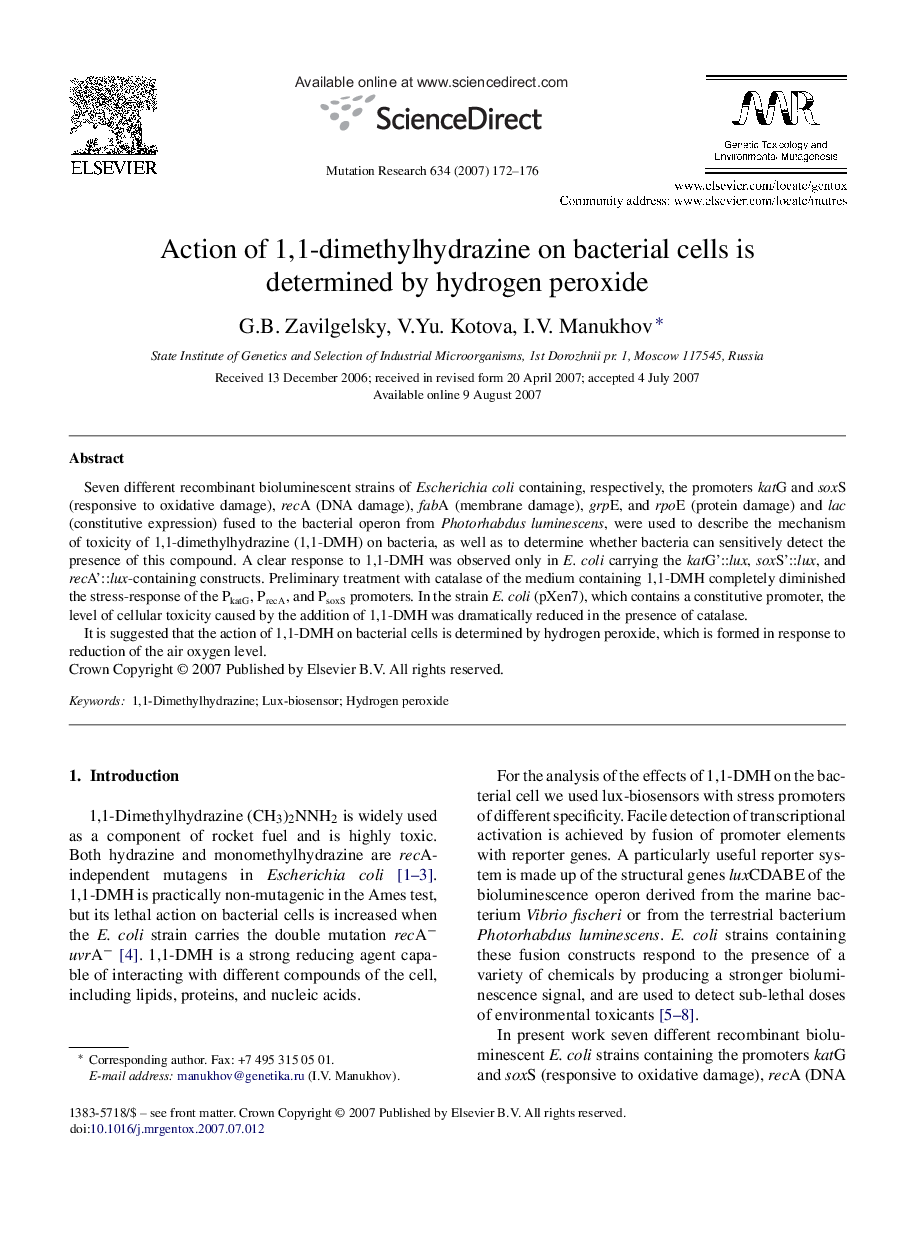| Article ID | Journal | Published Year | Pages | File Type |
|---|---|---|---|---|
| 2149060 | Mutation Research/Genetic Toxicology and Environmental Mutagenesis | 2007 | 5 Pages |
Seven different recombinant bioluminescent strains of Escherichia coli containing, respectively, the promoters katG and soxS (responsive to oxidative damage), recA (DNA damage), fabA (membrane damage), grpE, and rpoE (protein damage) and lac (constitutive expression) fused to the bacterial operon from Photorhabdus luminescens, were used to describe the mechanism of toxicity of 1,1-dimethylhydrazine (1,1-DMH) on bacteria, as well as to determine whether bacteria can sensitively detect the presence of this compound. A clear response to 1,1-DMH was observed only in E. coli carrying the katG’::lux, soxS’::lux, and recA’::lux-containing constructs. Preliminary treatment with catalase of the medium containing 1,1-DMH completely diminished the stress-response of the PkatG, PrecA, and PsoxS promoters. In the strain E. coli (pXen7), which contains a constitutive promoter, the level of cellular toxicity caused by the addition of 1,1-DMH was dramatically reduced in the presence of catalase.It is suggested that the action of 1,1-DMH on bacterial cells is determined by hydrogen peroxide, which is formed in response to reduction of the air oxygen level.
